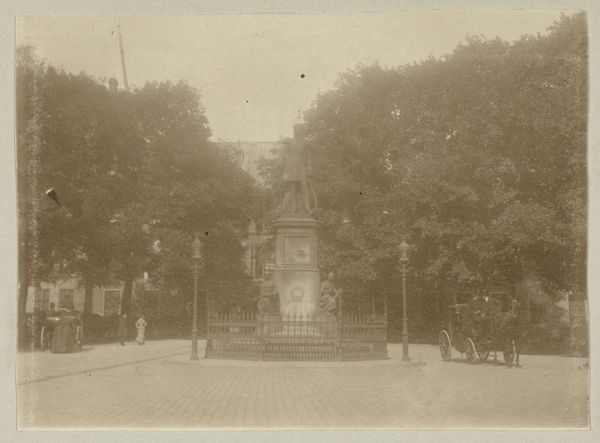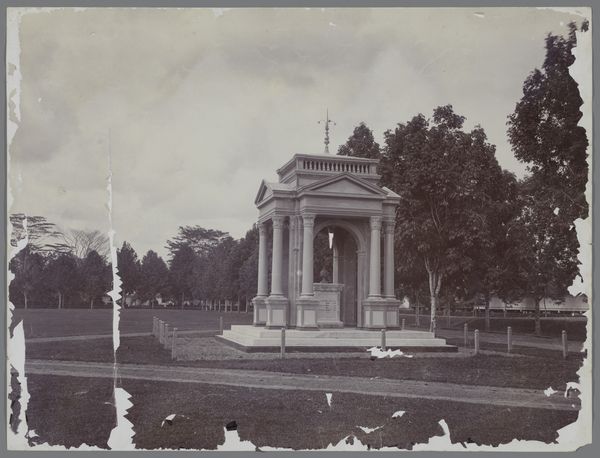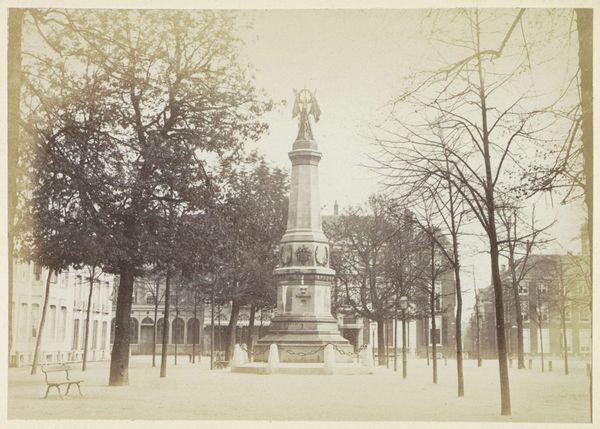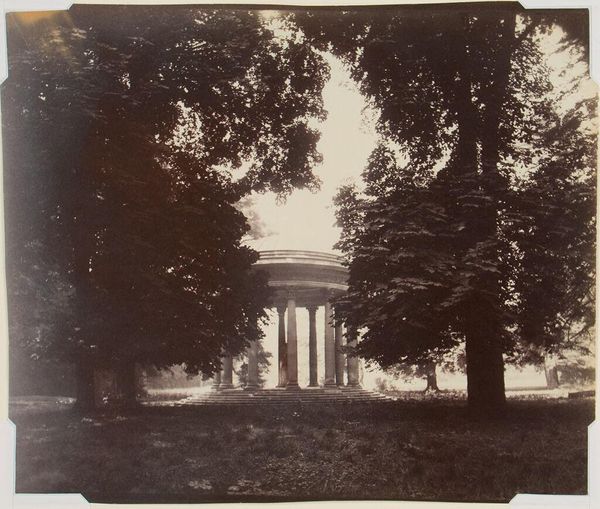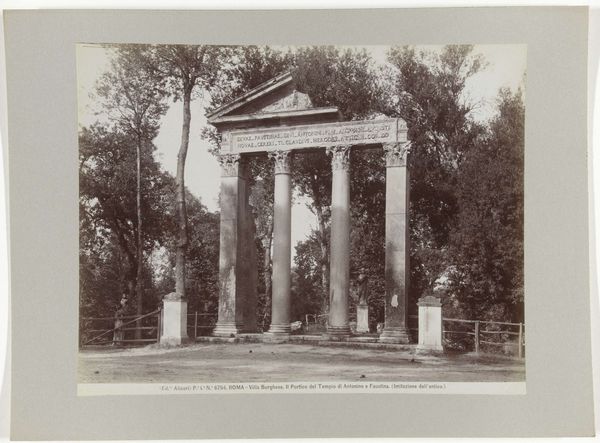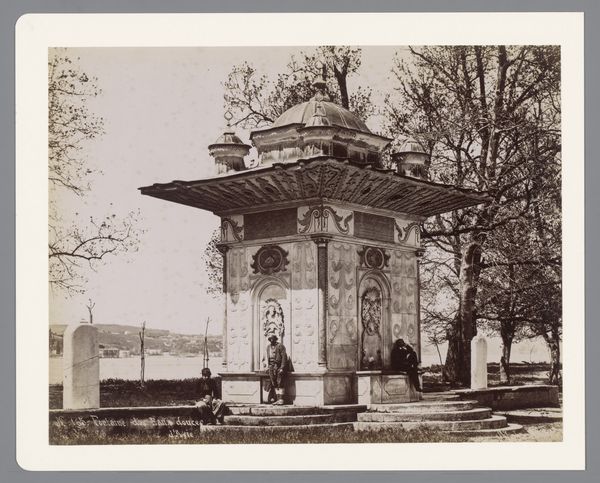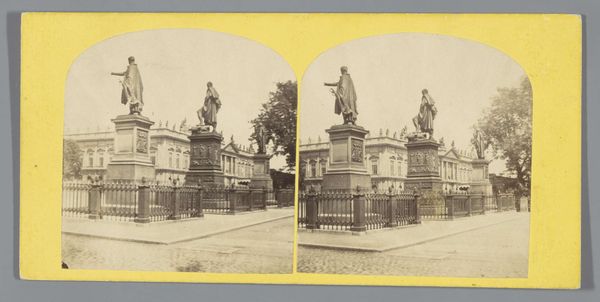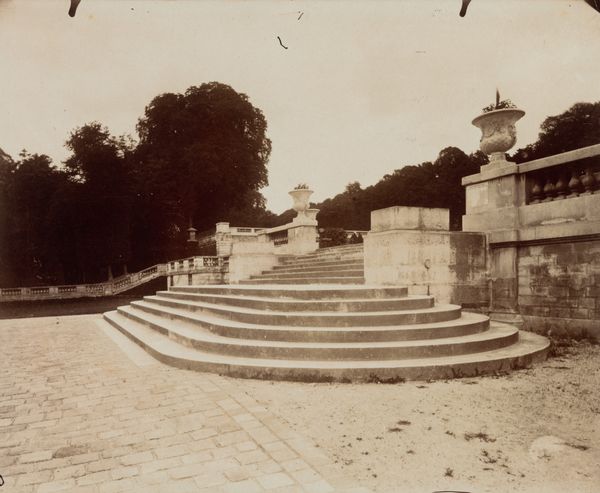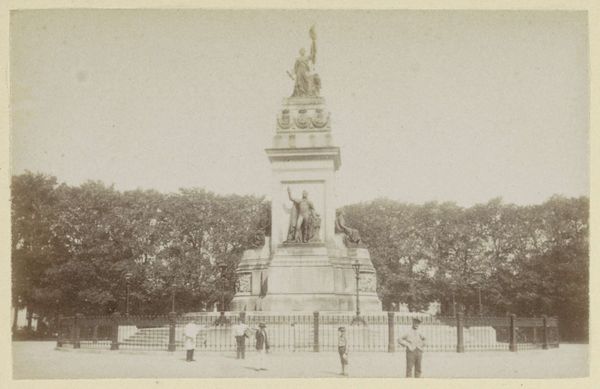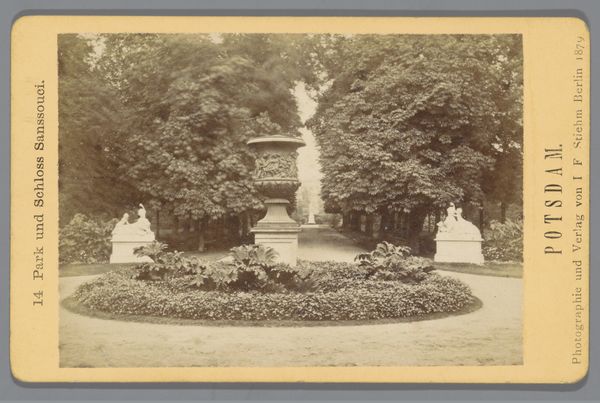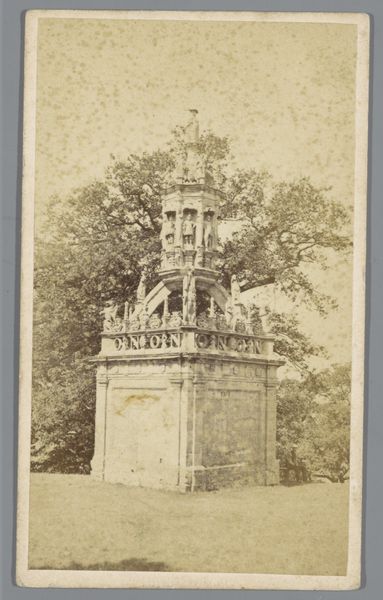
print, photography, gelatin-silver-print, architecture
#
tree
#
black and white photography
# print
#
landscape
#
photography
#
historical photography
#
arch
#
gelatin-silver-print
#
monochrome photography
#
19th century
#
symbolism
#
cityscape
#
history-painting
#
architecture
#
realism
#
monochrome
Copyright: Public domain
Editor: We're looking at Eugène Atget's "Fontaine des Innocents," a gelatin-silver print. It's striking how the photographer captured the intricate architectural details of the fountain. What stands out to you when you examine this image? Curator: Initially, the tonal range in Atget's photograph is captivating. The juxtaposition between the stark white skies, and the deep shadows inherent in the fountain's structure establish a visual tension. Editor: I see that contrast. Is there any symbolic relevance that comes from that opposition of light and shadow? Curator: Consider how the photographer is strategically using these structuralist approaches to frame elements. Notice, how Atget emphasizes the textured surfaces of the stone, capturing the light reflecting off its wet exterior, a subtle nod to photography's intrinsic ability to represent the real? Editor: So you're saying it's not just a photograph of a fountain, it's a study of light and texture too? Curator: Precisely. And also, look at the composition: the positioning of the trees that bracket the monument lend another interesting structuralist approach. It emphasizes the geometrical interplay of vertical and horizontal planes between the architecture and verdant life of Paris. What’s your sense of how this all contributes to the photograph’s meaning? Editor: I think that creates a sense of place. I see what you mean now. By focusing on the form and the details, Atget highlights the tension between artifice and nature. Curator: Precisely. In the end, it allows us to focus on Atget's formal strategies within the visual and theoretical space as a semiotic, where urban space transforms into cultural time. Editor: I appreciate how breaking down the components opens a dialogue. I hadn't initially considered that perspective on how structure and light operate together here.
Comments
No comments
Be the first to comment and join the conversation on the ultimate creative platform.
